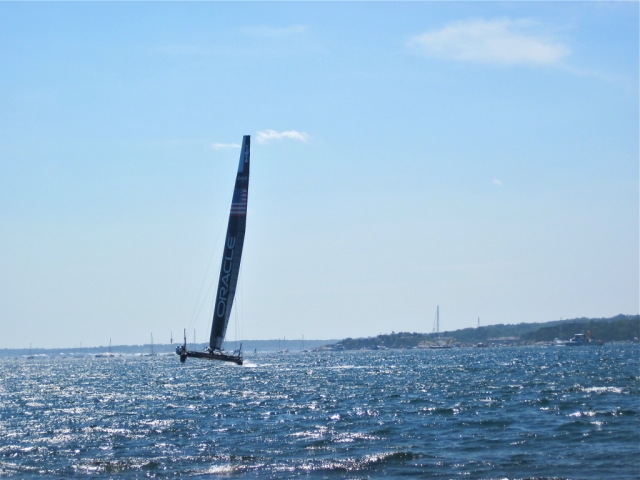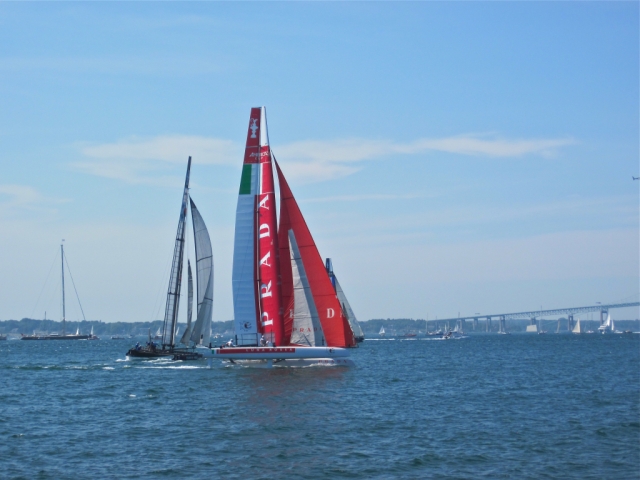Burnout at sea
Last night a new guy walked in the crew house. The first impression was of a fit young man with an enthusiastic smile, like many in the Superyacht industry. The prototype of the fun seeker young white male. I immediately assumed he was looking for place to stay and for a job on a yacht. But after a little, I started noticing that he had some difficulty walking and standing. He was wandering around the house purposeless, unable to speak coherently. It was clearly intoxicated, so we helped him to find his way to a vacant bed and have a deep rest.
From the few information collected, we understood that he was regularly employed on a yacht and that at a certain moment, he suddenly left his position without telling anybody, went to a bar to get drunk. The next morning although a little hangover, he was back on his feet and even chatty, before a colleague came to pick him up.
It was evident that the guy had lived through an episode of severe burnout . We could not get much of his story during the next morning conversation, we recorded incoherent background data about mean comments received from a stewardess. Apparently he suffered from not being recognized and respected in the crew mass. What was evident is that that personal relationships had become intolerable to the point of leaving the boat quickly to go hide somewhere.
Crew members that abandon their duties without notice are an extreme response to situations that can be fairly common on yachts with a busy program: the lack of time off and personal space; tasks that are too narrowly restricted; high competition for jobs; absence of personal boundaries; small group dynamics that can recreate family-related dynamics; need for personal growth. Tracy’s study of workers aboard cruise ships describes burnout as “a general wearing out or alienation from the pressures of work” and “[..] burnout is largely an organizational issue caused by long hours, little down time, and continual peer, customer, and superior surveillance” (Tracy, 2000 p. 6).
This is especially true for young people approaching this world. The assumption is that working on a superyacht is a dream job, an exclusive high class club, but they soon realize that the work can become very repetitive, and the fun part is for the exclusive use of owners and guests. Captains and officers sometimes set up a military-style organization to keep crew engaged and prevent insubordination. The time off for traveling is very restricted and concentrated in one single trip per year that makes it difficult to cultivate relationships with family and friends. Even if they are engaged in an off the beaten track program like sailing around the world, they see those countries through the portholes, quick walks around Marinas and joining shore-based parties where the level of friendship is correlated with the frequency of meetings at the bar.
These harsh and extreme images often adorn the descriptions of real situations lived by yacht crew during difficult moments in their careers. It’s a tough life, exacerbated by a materialistic world and very high expectations on the job. You feel like you are living a jet-set style life but you pass your days crawling in the bilge to get rid of oily waters or polishing stainless steel and silverware, or cleaning tight corners with cotton swabs. All this alone is enough to generate dangerous levels of stress as I described in this post. When stress coming from an oppressive organizational climate chime in, problems can escalate quickly.
Even if I have no better first hand elements to analyze the situation of the one-night crew house guest, it wouldn’t be surprising that the desire to escape was brought up by faulty relationships onboard. A basic primordial decision making response can be triggered by reiterated exposure to stressful day to day relationships. The subcortical region of the brain, our ancient “Reptilian brain” (MacLean, 1990), is the seat of our instinctual behaviors involved in aggression, dominance, territoriality, fear and rage.
When such a tipping point is reached, a “fight-or-flight” response (Cannon ,1915) takes over. A hormonal cascade drives to a full body activation, with increased heart rate, variation in skin conductivity, dilation of pupil, as some of the most evident changes that prepare the body to action. All the strategies to lower the level of anxiety are not working anymore so the control goes on”autopilot”. The survival situation requires to shut off the slow and complex control functions of the brain cortex, the control pas to the primitive ready to action “reptilian brain” that commands to attack or retreat.
He has to be a minority onboard, he knows he’s in a too weak position to start a fight against the rest of the crew, probably he perceives that nobody is an ally. He can feel how isolated he became. Even if based on instinctual patterns, his “reptilian brain” is highly intelligent and adaptive and drives him towards the right choice. Fighting would be a poor decision in his case, flight is the correct one. His only solution is to escape, find a place to decompress his anxiety, far enough from its source, eventually find some relief gulping down high doses of alcohol to keep recent emotional memories off the stage.
A SHARED RESPONSIBILITY
The case is not isolated, and of course does not only concern the yacht industry. An external observer in this situation would normally blame the lack of self control of the young boy, his immaturity and inexperience, his underestimation of the responsibility of the job. Not infrequently, the subject is described as “normal kid” or “a nice person”, who didn’t ever show any alarm signals before the dramatic event.
What is not self evident is the responsibility of the yacht as an organization. The crew and their leaders form a symbiotic environment where breaking point situations are not asymptomatic. There is a general lack of knowledge and preparation for this important psychological issues among crew members, but most of the time it’s a lack of care, or too much focus on the job and not on personal relationship. A hard working, optimistic person is not perceived as fragile or prone to depression and the desire to prove oneself on the job can play a dangerous role in estimating one’s own ability to cope with stress and handle social situations onboard.
HOW TO ASSESS BURNOUT
Assessing a potential burnout situation require paying attention to explicit and implicit signs. When the atmosphere onboard is set in a way that feelings and emotions are accepted and shared, this task is pretty easy and self evident. At any time, the crew will be aware on what’s the temperature of the relationship among the crew, and if there are warning signs help can be found. It’s important to pay attention to all those that report feelings of being trapped, isolated or emotionally exhausted. Crew that raise their voice unnecessarily may be experience frustration. Listening and being open is the first step, but it may be also necessary to have periodic crew meetings and individual interviews where captains and leaders can monitor crew’s well being and happiness as well as professional objectives. Common implicit signs of burnout are substance abuse behaviors, social isolation, inability to concentrate, forgetfullness, and change in sleep and appetite habits.
The closest crew members are the ideal candidates to detect those signs and to help the person to become aware of the potentially dangerous situation. They can offer they experience as counselor or mentors or look themselves for help in the leadership of senior crew members. A general education to recognize and to be willing to share one’s internal world is the key in this process, unfortunately it’s not one of the skills taught during professional training. It is not trivial to recognize that emotional responses vary according to cultural factors, personality and social environment. Promoting and supporting the recognition of emotions on board, Stress Management Training, a honest but caring system of feedback and the ability to develop recreational activities are important aids to help maintain a good psychological balance in a very busy season spent onboard.









